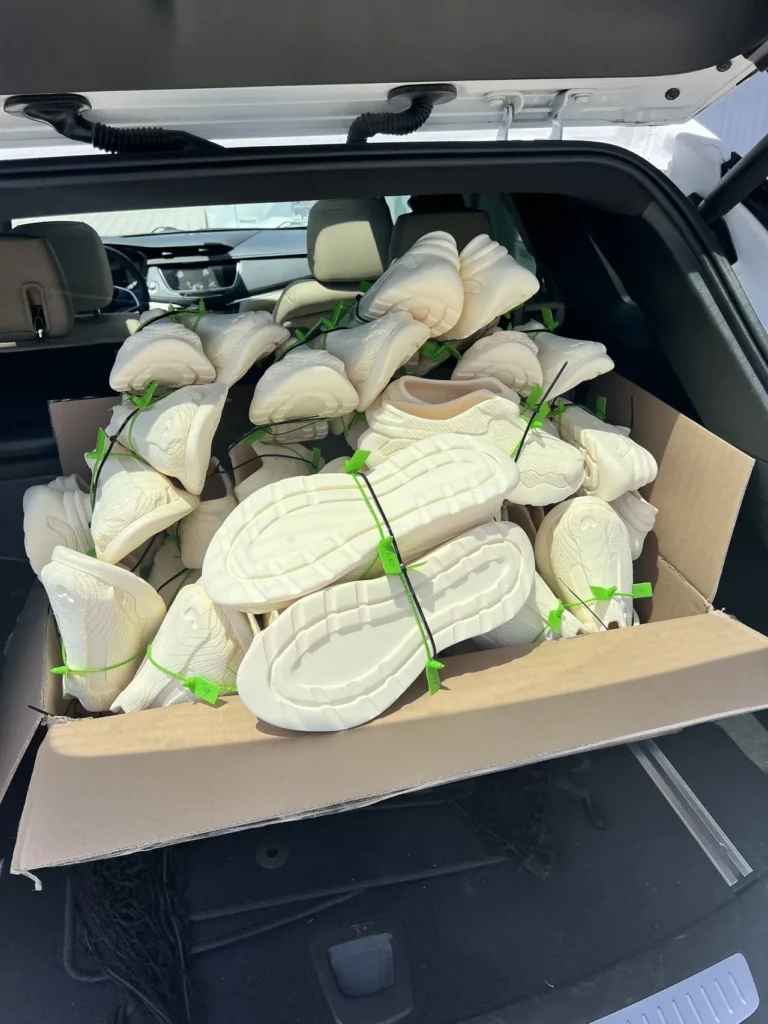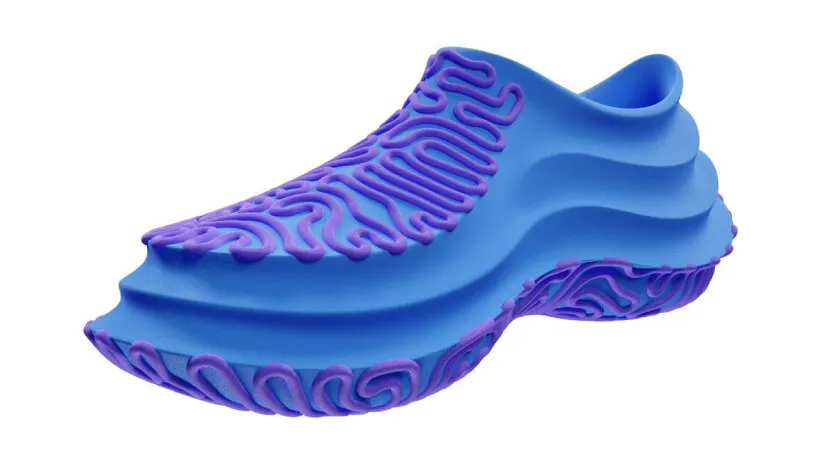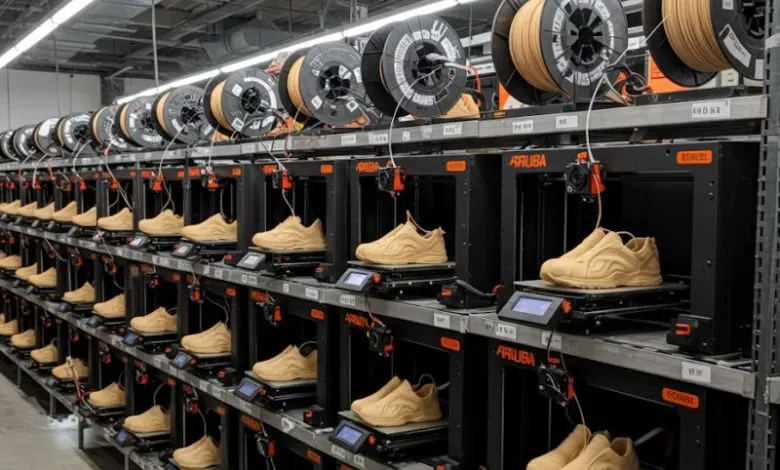Introduction — From Garage Startup to High‑Tech Footwear Powerhouse
Two years ago mechanical‑engineer‑turned‑founder Kuba Graczyk was squeezing lattice sneaker prototypes out of a handful of desktop printers in his Ventura, California garage. Today that same vision has attracted $7.2 million in seed funding, a roster of deep‑tech investors, and a 10‑thousand‑square‑foot headquarters where 800 networked FDM printers will soon hum 24/7. Koobz’s goal: produce up to 200 000 monolithic‑TPU sneakers a year by 2026 — without molds, stitching, or unsold inventory.
This article unpacks how the round came together, how Koobz’s two‑step “print & finish” process works, and what an 800‑printer factory could mean for the fast‑growing market for on‑demand, sustainable footwear.
Who Bankrolled the $7.2 Million Seed Round — and Why It Matters
- Lead investor: Uncork Capital (early backer of Fitbit, Postmates)
- Follow‑ons: Cake Ventures, Antler, V1.vc, Karman Ventures, Pathbreaker Ventures & Anorak Ventures
- Founder’s pitch: “This capital lets us hire world‑class talent and launch an MVP factory with 800 printers,” Graczyk wrote in his LinkedIn announcement, closing with “Don’t give up. Good things will happen.”

The cheque is roughly three times the median U.S. additive‑manufacturing seed and signals strong VC faith in a platform that can serve many brands, not just sell one hero shoe.
From Garage to 800‑Printer ‘Sneaker Factory’

| Milestone | Date | Why It’s Critical |
|---|---|---|
| Company founded | 2022 | Proof‑of‑concept print farm built in a two‑car garage |
| Beta sales of 16 kW sneaker | Q4 2023 | Demonstrated real‑world demand and durability |
| Seed round closes | June 2025 | $7.2 M secured; aggressive hiring begins |
| New Ventura HQ opens | Q4 2025 (target) | 10 000 ft², renewable‑energy hookups |
| MVP factory live | 2026 (target) | 800 printers, 200 k‑pair annual capacity |
Ventura sits just outside L.A.’s high‑rent zone yet close to design talent and West‑Coast ports, and it qualifies for California clean‑energy incentives — handy when your production line is 800 machines deep.
Printing a Shoe in Two Steps — Why ‘Monolithic’ Matters
Traditional sneakers hide 70–200 separate parts assembled in 300–700 steps and dragged through an 18‑ to 24‑month supply chain. Koobz simplifies that to two steps:
- Slice & Print — Upload a full‑shoe CAD file; an FDM farm prints the lattice sneaker in flexible TPU.
- Surface Finish — Bead‑blast, clean, box. No glue, stitching or midsole curing.

Because the shoe is one material, designers can digitally tune cushioning in minutes. The process debuted publicly with the 16 kW sneaker that Wired hailed as proof “printed shoes are already on real feet.”
Can 800 Printers Really Hit 200 000 Pairs?
- Print time: ≈ 15 h/pair
- Fleet: 800 printers at 90 % uptime
- Throughput math: 800 × 0.9 = 720 effective printers → ≈ 196 k pairs/year — on target.
Antler predicts throughput could double once robotics and AI error‑detection mature.
Why 200 k matters: it’s enough volume for multiple mid‑tier lifestyle brands yet nimble enough for limited drops and influencer collabs.
Why On‑Demand, Made‑in‑USA Sneaker Production Changes the Game
- Zero inventory: Koobz’s API prints only after checkout, erasing warehousing risk.
- Lower carbon: Domestic output scrubs ~1.3 kg CO₂ per pair by skipping trans‑Pacific freight.
- Compliance ease: Labor and safety audits stay under one U.S. roof, simplifying life for partner brands.
A Zero‑MOQ Playground for Independent Designers
Koobz slashes minimum order quantity to zero. Five‑step onboarding: Upload CAD → Approve sample → Set price → Go live → Collect royalties. Early beta creators have already pushed limited‑run colorways, moving hundreds of pairs without tying up cash in molds or stock.
Print‑Farm Showdown: Koobz vs Zellerfeld vs Hilos
| Company | Tech / Capacity | Funding | Market Focus | Key Edge |
|---|---|---|---|---|
| Koobz | 800 TPU‑FDM printers (Ventura) | $7.2 M seed (2025) | Contract manufacturing + DTC | Two‑step monolithic design |
| Zellerfeld | “Several hundred” FDM (Hamburg) | $15 M seed (2023) | Luxury collabs (Heron Preston) | QR‑scan custom fit |
| Hilos | Powder‑bed fusion (Portland) | Undisclosed A (2024) | Parts & midsoles | Closed‑loop powder recycling |
Big sneaker brands talk; these startups ship product—and investors have noticed.
Market Momentum: 3D‑Printed Footwear on Track for $5 B
Grand View Research pegs the sector at $1.6 B in 2023, forecasting $5.4 B by 2030 (18.6 % CAGR). Two forces drive that surge: personalization demand and brands’ thirst for risk‑free inventory. Koobz sits at the nexus, offering scalable, on‑demand capacity.
Roadblocks on the Runway
- Materials durability — TPU lattices must pass 500 km wear‑tests.
- Certification load — Every new material/colorway needs ASTM slip and Prop 65 checks.
- Perception gap — Some buyers still equate “printed” with “fragile.”
- Talent scale‑up — Koobz must staff robotics and ops teams without bloating overhead.
Conclusion — Fuel for Every Builder
Koobz’s leap from garage tinkering to an 800‑printer smart factory shows that bold ideas still win big cheques. If the company hits its 200 k‑pair target, it will rewrite how sneakers are made — and prove that local, on‑demand, additive manufacturing can outpace the global mold‑and‑inventory playbook.
Founder mantra: “Don’t give up. Believe in yourself. Good things will happen.” — Kuba Graczyk
FAQ
A Ventura startup running 800 automated 3D printers to create on‑demand, single‑material sneakers for brands and consumers.
Its MVP factory targets late‑2026 completion, aiming to print roughly 200 000 pairs a year after ramp‑up.
Printing only after purchase removes costly molds, prevents dead inventory, and cuts shipping emissions by keeping production local.
Sources
- VoxelMatters, “Koobz closes seed round, bringing total funding to $7.2 M,” Jun 2025.
- LinkedIn posts by Kuba Graczyk and Jeff Clavier, Jun 2025.
- Koo.bz (company website), accessed Jun 2025.
- Wired, “Big Sneaker Brands Promised a 3D‑Printed Revolution …,” Nov 2024.
- Grand View Research, “3D Printed Shoes Market Size Report,” Apr 2024.




